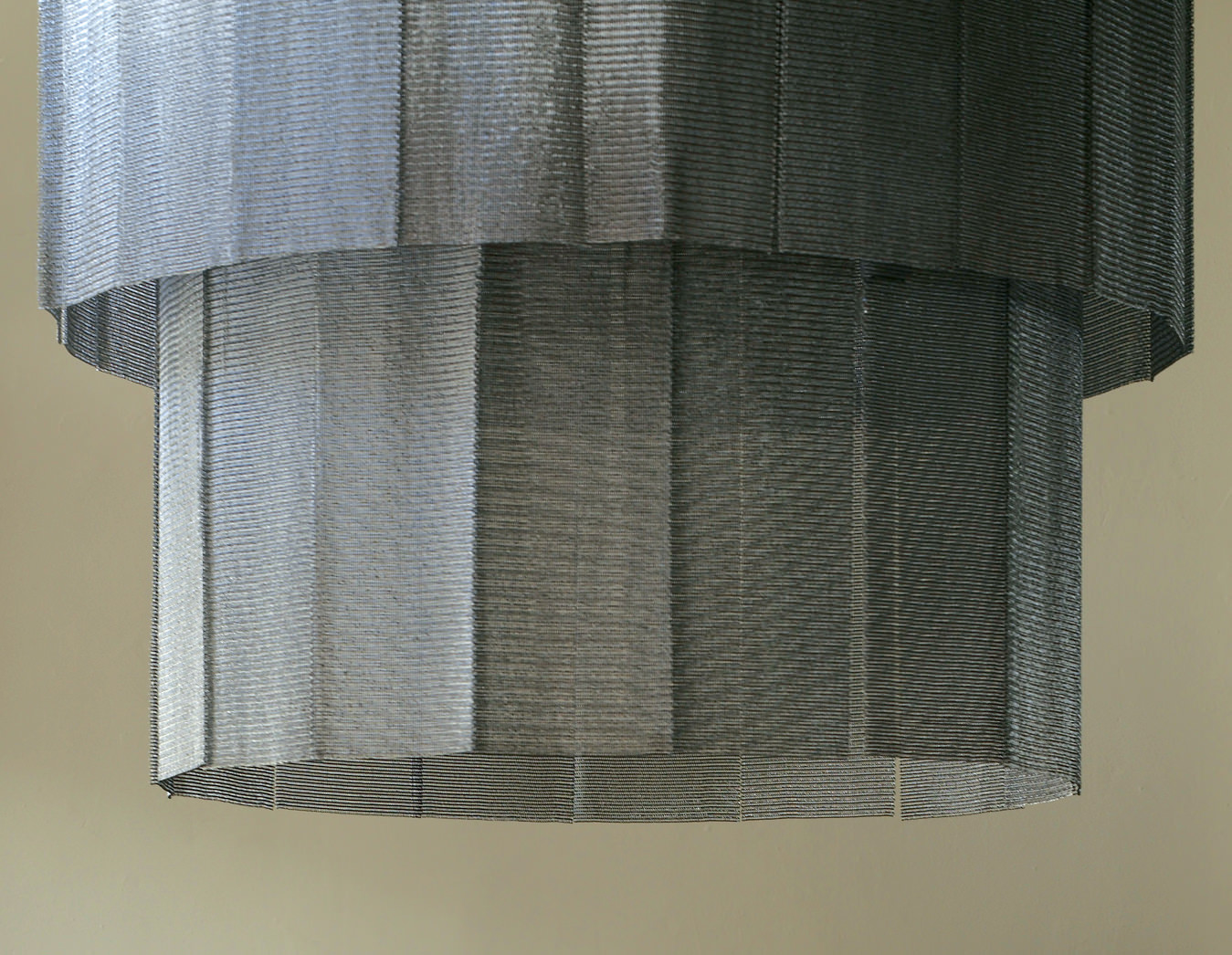The Renaissance of Chain Mail
Ring king.

Hear someone mention chain mail, and you might think of medieval costumes and swordplay, of Russell Crowe in Gladiator or Gerard Butler in Beowulf & Grendel.
But the stuff of legends is not just for knights in shining armour. Chain mail is turning up on curtain rods, light fixtures and designer furniture in high-end restaurants, bespoke homes and luxe hotels. The Financial Times declared that chain mail is a design trend to watch in 2008. Perhaps it took a cue from British design superstar Kelly Hoppen, who is touting chain mail for the home. Few who visit her London home can fail to notice the large chain-mail light fixture over the dining table. Hoppen’s signature line of furniture features upholstered chairs modernized (or, rather, antiquated) with a delicate skirt of chain mail.
Ancient Celts generally get credit for being the first to weave metal rings into a sleek protective garment. Roman legions are said to have adopted chain mail from their adversaries. (The term mail comes from the French word maille, which in turn evolved from a Latin word referring to the mesh of a net.) It experienced a decline in popularity in the 14th century when medieval knights gave up their mail in favour of armour made of solid metal plates.
Today, one of the biggest users of chain mail is the anachronistic crowd that re-creates the life and times of medieval battlefields. That’s how Jonathan Daniels got into the business. As a teenager growing up on a farm in Saskatchewan, he bought the metal rings to make a couple of chain-mail shirts, but decided it would be less expensive and more fun to make the rings himself. What began as a hobby grew into a sideline; as an engineering student at the University of Saskatchewan, he began selling handmade rings through a company he named the Ring Lord.
Jonathan and his wife, Bernice, who is also an engineer, installed their first automated ring machine (affectionately nicknamed Tor) in their garage in 2001, although the business soon outgrew their space in the city. Today, the Ring Lord operates from their country acreage outside Saskatoon. It is the largest manufacturer of metal rings for chain mail, and the only one making custom chain-mail fabric in North America, which these days has increasingly varied design applications.
“When we got into machine-made fabric, my intention was to focus more on the architectural market because no one at the time was doing it,” says Jonathan. “Other companies were making chain-mail fabric for butcher’s gloves, but I had no interest. It’s a whole lot easier to make a big sheet of fabric.”
And talk about big. In 2003, the company produced four massive banners, each with a heraldic-type motif, for the gift shop at the Tower of London. The sheer size and custom design required a cadre of home-based chain-mailers, who wove the rings by hand. Later, individual pieces were “sewn” together at the Ring Lord workshop. “Because they were so big, no one was doing a single banner,” says Jonathan. “It was quite literally put together like a patchwork quilt, only you can’t see the seams.”
Of course, commissions ordered on behalf of Her Majesty don’t come along every day. Chain-mail fabric is more commonly employed as curtains, light fixtures, fireplace screens, and furniture accents. The company’s commissions include plaid fabric for Burberry, shimmery pendant lamps for the Bellagio hotel in Las Vegas, dramatic window dressings for Chicago’s Omni Hotel, opulent chandeliers for a nightclub in California, and even a light-filtering curtain for a business executive’s office.
“The look is modern with a clean line,” says Bernice, who has studied architecture. “It blends the contemporary with tradition, and creates a nice balance with wood. It’s quite versatile, and that’s the approach designers are taking.” Chain mail is also fireproof, which suggests a potential for industrial and safety applications.
To date, most of their work is for corporate settings, with the majority of commissions coming from south of the border. So while home-decor chain mail has not yet spread like proverbial wildfire, it is firing the imaginations of savvy designers who are hot for something new. “For many, it starts with the novelty factor: ‘Ooh, I want chain mail. I’ll be the first,’ ” says Bernice. “Then there’s a bit of a steamroller effect as they see the possibilities as a design element. We have repeat customers.”
Jonathan and Bernice haven’t forgotten their roots. Every year, they sell 100 million rings to makers of chain mail and metal jewellery. And they still equip a few knights in shining armour: ones populating the silver screen. But it’s clear from the myriad design applications that there’s a future for this historic creation.
Photo: Ochre chandelier designed by Kelly Hoppen.




